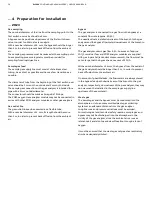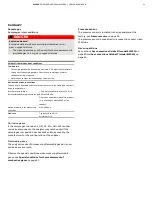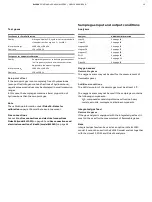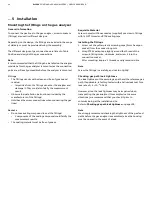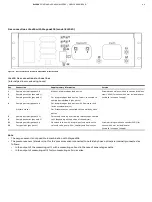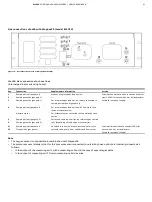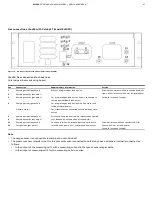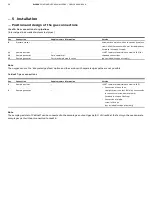
44
EL3000
CONTINUOUS GAS ANALYZERS | OI/EL3000-EN REV. D
… 5 Installation
Mounting the fittings on the gas analyzer
General information
To connect the gas lines to the gas analyzer, screw-in sockets
(fittings) are used in different designs.
Depending on the design, the fittings are included in the scope
of delivery or must be provided during the assembly.
The different designs of gas connections are listed in Table
Position and design of the gas connections.
Note
It is recommended that the fittings be installed on the analyzer
module before the gas analyzer is mounted, as the connection
ports are still easily accessible before the analyzer is mounted.
Fittings
• The fittings used must be clean and free of grease and
residue!
– Impurities from the fittings can enter the analyzer and
damage it. They could also falsify the measurement
result.
• Observe the installation instructions provided by the
manufacturers of the fittings!
• Hold back the screw connections when connecting the gas
lines!
Gaskets
• Do not use sealing compound to seal the fittings!
– Components of the sealing compound could falsify the
measurement results.
• The sealing material must be free of grease.
Requisite Material
Screw-in spud with hose nozzles (supplied) or screw-in fittings
with ⅛ NPT thread and PTFE sealing tape.
Installing the fittings
1. Screw out the yellow plastic screwing caps (5 mm hexagon
socket) from the connection ports.
2. Wrap PTFE sealing tape tightly around the thread of the
screw-in fitting twice, clockwise, and screw it into the
connection socket.
After mounting, approx. 2 threads usually remain visible
Note
Screw the fittings in carefully, and not too tightly!
Checking gas path leak tightness
The leak tightness of the sample gas path and the reference gas
path, if applicable, is factory-tested with a helium leak test for a
leak rate of < 2
×
10
−
4
hPa l/s.
However, since the leak tightness may be impaired when
transporting the gas analyzer (for example due to severe
vibrations), we recommend that you check it prior to
commissioning at the installation site.
Refer to
Checking gas path leak tightness
Note
We strongly recommend checking the tightness of the gas feed
paths before the gas analyzer is assembled, since the housing
must be opened in the event of a leak.

